Description
Caring for your Jelly Palm
The Pindo Palm (Butia capitata), also known as the “Jelly Palm” due to its sweet, edible fruits, is a graceful, slow-growing palm native to South America. Its arching, blue-green fronds, and cold tolerance make it a popular choice for both tropical and subtropical landscapes. This hardy palm is not only prized for its ornamental value but also for its adaptability to a wide range of climates, including regions that experience frost. With the right care, the Pindo Palm can thrive in your garden or even in large containers.
Light
The Pindo Palm thrives in full sun but can tolerate partial shade. For optimal growth and the best appearance, plant it in a location where it can receive at least 6 hours of direct sunlight each day. While it can adapt to partial shade, this palm will grow more slowly and may produce fewer flowers and fruits.
If growing indoors or in a location with less sun, place the palm near a window with plenty of bright, indirect sunlight. Though it tolerates a variety of lighting conditions, the Pindo Palm prefers the warmth and brightness of direct sunlight.
Water
The Pindo Palm is relatively drought-tolerant once established, but it benefits from regular watering during its early years and the growing season. Water your Pindo Palm deeply and consistently, especially during hot, dry periods. The goal is to keep the soil evenly moist but never waterlogged.
In its first year after planting, water the palm 1-2 times a week, allowing the top few inches of soil to dry out between watering sessions. After the first year, you can reduce watering to once a week or even less if you live in a region with regular rainfall.
Overwatering can lead to root rot, so ensure the palm is planted in well-draining soil. During winter, reduce the watering frequency as the plant’s growth slows and its water requirements decrease.
Soil
Pindo Palms are adaptable to various soil types but perform best in well-draining, sandy soils. It can also grow in loamy or slightly clay soils as long as they are well-drained. If your soil is heavy or clay-like, consider amending it with sand, perlite, or organic compost to improve drainage.
These palms prefer slightly acidic to neutral soil with a pH range of 6.0 to 7.5. A balanced, well-draining mix will help promote healthy root growth and prevent water retention, which can cause issues like root rot.
Temperature
One of the Pindo Palm’s most attractive qualities is its cold tolerance. It is hardy in USDA zones 8-11 and can withstand temperatures as low as 15°F (-9°C) for short periods, making it one of the few palms that can thrive in cooler climates. However, extended exposure to freezing temperatures can cause damage to the palm’s fronds.
In regions where winter temperatures drop below freezing, it’s a good idea to protect the palm by covering it with frost cloth or other insulating materials. If grown in containers, bring the plant indoors or to a sheltered location during cold snaps to prevent damage.
The Pindo Palm thrives in warm, sunny climates and performs best in tropical or subtropical regions where temperatures remain between 60°F and 85°F (16°C to 29°C) for most of the year. However, it can adapt to a wider range of conditions, making it suitable for both coastal and inland landscapes.
Fertilization
Like most palms, the Pindo Palm benefits from regular fertilization to promote healthy growth and vibrant fronds. Use a slow-release, palm-specific fertilizer that contains essential nutrients such as nitrogen, potassium, magnesium, and manganese. These nutrients help prevent yellowing fronds, which can indicate nutrient deficiencies.
Fertilize your Pindo Palm in the spring, summer, and early fall, following the package instructions. Typically, you can fertilize every 2-3 months during the growing season. Avoid fertilizing during the winter when the plant’s growth slows down.
If the palm is grown in sandy or poor soil, supplement with additional micronutrients, such as magnesium and manganese, to support healthy frond development.
Pruning and Maintenance
Pindo Palms are low-maintenance and do not require frequent pruning. However, you should occasionally remove dead or damaged fronds to maintain the plant’s appearance and overall health. Use clean, sharp pruning shears to trim old fronds as close to the trunk as possible. Be careful not to over-prune, as leaving some dead fronds can help protect the trunk from cold weather.
Avoid pruning green, healthy fronds, as these are essential for photosynthesis and nutrient storage. Over-pruning can weaken the plant and slow its growth.
If your Pindo Palm is producing fruit, you may also choose to trim off the flower stalks and fruit clusters if they become messy. While the fruits are edible and can be used to make jellies or wines, some gardeners prefer to remove them to keep the area tidy.
Pest and Disease Control
Pindo Palms are generally pest-resistant, but they can occasionally attract common pests such as scale insects, spider mites, and aphids. Regularly inspect the fronds for signs of infestation, such as yellowing, spotting, or a sticky residue (honeydew) left behind by pests.
If you notice pests, treat the palm with insecticidal soap or neem oil. For severe infestations, use a systemic insecticide specifically formulated for palms.
Fungal diseases like root rot or leaf spot can also affect the Pindo Palm, particularly in wet conditions or poorly drained soil. To prevent these issues, ensure the soil drains well, and avoid overwatering. If root rot occurs, remove the affected roots and replant the palm in fresh, well-draining soil.

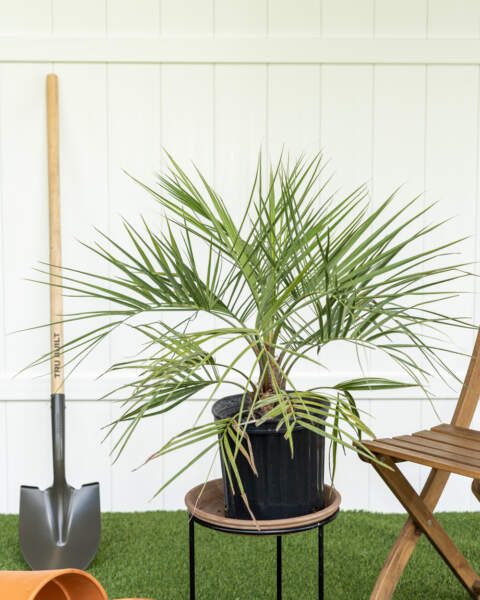
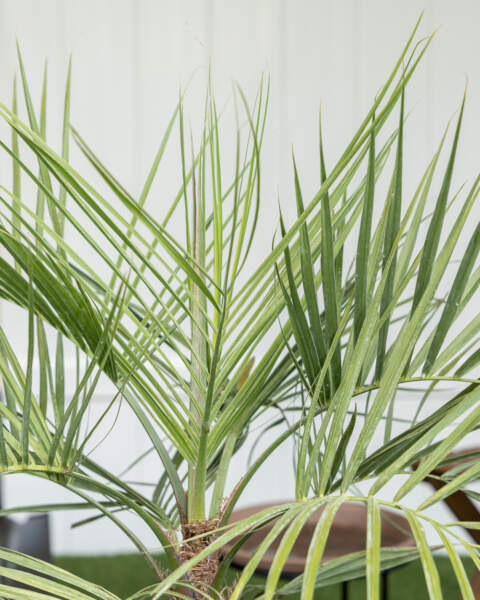
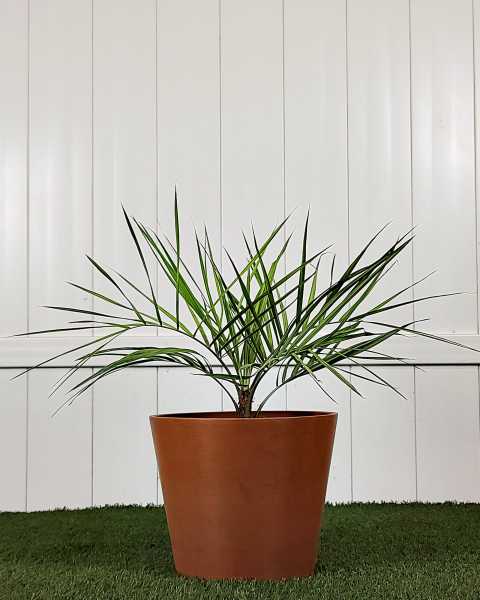
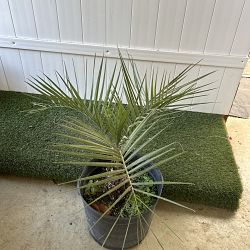
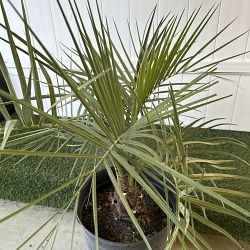




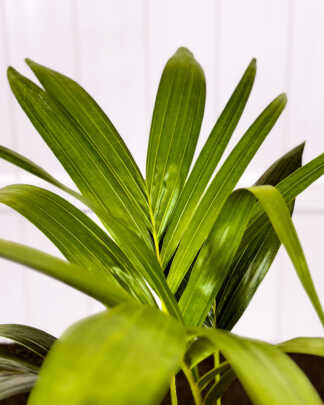
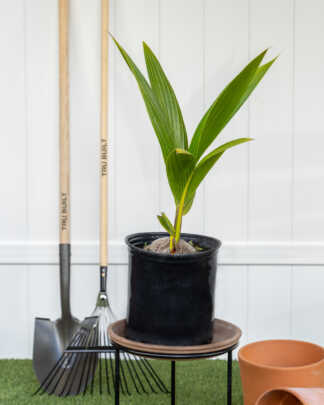
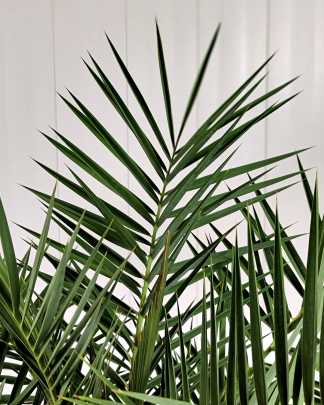
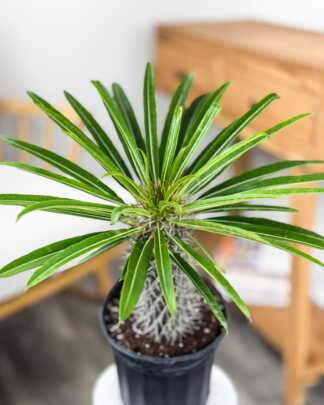
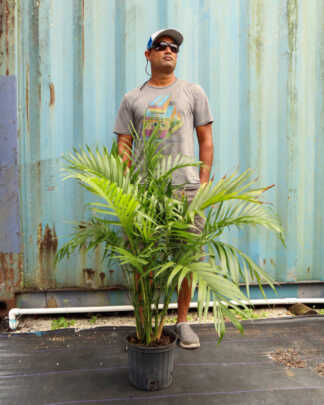


Kevin Hoffmann (verified owner) –
Pindo Palm arrived in great shape. Again, thanks for the great packaging and customer service!
Brian H. (verified owner) –
Plant arrived quickly and healthy looking. Great communication as it was being processed. Look forward to watching it grow!
Thanks Brian
Clifford J. (verified owner) –
My plant arrived in great condition despite there being a shipping delay due to FedEx. A great experience, and it was great that they sent a photo of your plant to you before you ever receive it!
Bill C. (verified owner) –
Absolutely huge plant for the money (like almost 5 feet tall for only $63), bigger than the main picture, full of leaves, looks great. Just buy it without the pots and get a cheaper one at a hardware store.
It is VERY IMPORTANT to Keep it inside, watered, and away from the tiniest bit of direct sun for a week or two to prevent burning the leaves, don’t fertilize either for awhile.
betty g. (verified owner) –
beautiful, healthy plant, larger than I expected. Packaged well. Is now in the dirt and looking good.
Paula (verified owner) –
Bruce A (verified owner) –
The plant I received was very securely packed and delivered in an exceptionally timely manner. It appears very healthy and lush – an extremely beautiful palm. You can tell that the growers really care about what they sell. I am extremely pleased with my purchase, and will be making another order from PlantVine very soon! Very highly recommended!!
Janice (verified owner) –
Box had a big dent when delivered so was concerned, but tree had no apparent damage. Some leaves had been folded but smoothed out and look fine.
Mark Tucker (verified owner) –
Sheila Calvert (verified owner) –
Plants are awesome!!
David C. (verified owner) –
Very nice and high quality plant, much larger than expected and once again, they did the best job I’ve ever seen packing and shipping a live plant, will definitely buy from here again soon!
James (verified owner) –